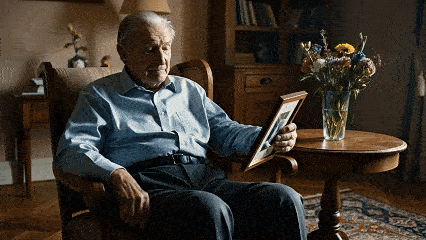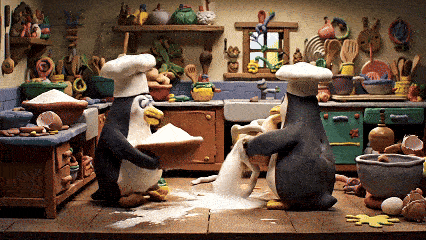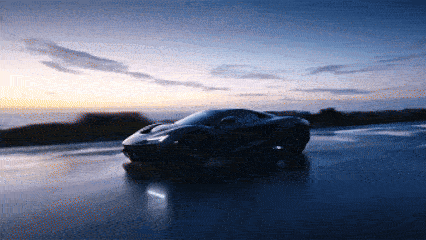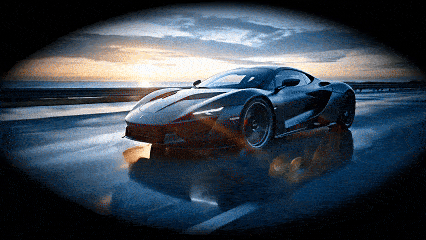Google's Veo 3 is making a huge impact on AI video generation. Its most popular feature is the ability to create video and audio together from a single text prompt, meaning characters, sound effects, and music are all generated at once, perfectly in sync. While this is incredibly powerful, many users don't know how to write a good Veo 3 prompt. Since generating each video can be expensive, a bad prompt leads to wasted time and money. Learning to write better prompts is the key to getting the video you want faster and more affordably.
This Veo 3 prompt guide is here to solve that problem. We will break down exactly how to write effective prompts—from crafting detailed scenes to making characters speak realistically. To help you put these tips into practice, MimicPC now offers two great options. You can use the standard Google Veo 3 for the highest quality and realistic physics, or choose Veo 3 Fast, which is cheaper and up to 5x faster, making it perfect for creators who need quick results.
The Parts of a Good Veo 3 Prompt: A Simple Checklist
To get a high-quality video from Veo 3, your prompt needs to provide clear and detailed instructions. A complete prompt should describe both the visual aspects of the scene and all of its audio components. By including these key elements, you can tell the AI precisely what you want to create, leading to better and more accurate results. This section will break down all the essential building blocks you should use.
Subject: The Star of Your Video
The subject is the "who" or "what" of your video—the central focus of the action. Clearly defining your subject is the most critical first step. If you are vague, the AI has to guess, which can lead to generic or incorrect characters and objects. Be specific. Instead of just "a man," try "a tired detective in his late 50s with a graying beard." Instead of "a car," describe "a classic red convertible from the 1960s." This detail gives Veo 3 a solid foundation to build the rest of the scene around.
Context: Setting the Stage
The context is the "where" of your video. It grounds your subject in a specific environment and provides the backdrop for the action. The context heavily influences the mood, lighting, and even the sounds the AI will generate. A prompt set "in a dark, ancient forest" will produce a vastly different result than one set "in a bright, futuristic shopping mall." Provide rich details about the location, such as "a cluttered artist's studio with paint splattered on the floor" or "a deserted beach at sunset with calm waves."
Action: What is Happening?
The action is what your subject is doing. This provides the narrative and movement in your video. Use strong, descriptive verbs to guide the AI. Instead of saying a character is "walking," you could say they are "striding confidently," "shuffling nervously," or "stomping angrily." The more specific your description of the action, the more dynamic and intentional your final video will feel. For example, "a chef is frantically chopping vegetables" tells a much better story than "a chef is cooking."
Style: Defining the Visual Look
The style is the artistic direction of your video. This is one of the most powerful elements for controlling the overall feel of the final product. You can command Veo 3 to mimic almost any visual aesthetic. This includes broad categories like cinematic, anime, or photorealistic, but you can also be more specific, such as gritty black-and-white noir film, vibrant claymation style, shot on a 1990s camcorder, or in the style of a LEGO movie. Specifying the style ensures the entire video, from characters to background, is visually consistent.
Camera: Your Virtual Director
Describing the camera work tells the AI how to "film" the scene. This element turns a static image into a dynamic video clip. You can specify camera angles, camera movements, and shot types. For example, you can request a dramatic drone shot flying over a mountain range, an extreme close-up on the character's eyes, or a smooth panning shot across a crowded room. Using cinematic terms like dolly zoom, high angle shot, or handheld shaky camera gives you precise control over how the audience experiences the scene.
Mood: Setting the Emotional Tone
The mood dictates the emotional atmosphere of your video, which is often controlled by lighting and color. This element helps the AI understand the feeling you want to evoke. Is the scene supposed to be happy, scary, romantic, or tense? Use descriptive words for lighting to guide the mood. For instance, soft, warm morning light filtering through a window creates a peaceful mood, while dark and mysterious with long, hard shadows creates a sense of suspense.
Just as important as what you see is what you hear. Veo 3 generates synchronized audio, so you must also direct the sound.
Dialogue: Giving Your Characters a Voice
This is where you specify any spoken words. To ensure Veo 3 understands that a character is speaking, it's best to use a clear format. For example, writing A woman says: "We need to find another way." works more reliably than putting the dialogue in standard quotation marks alone. This tells the AI to generate a voice and sync the lip movements to those specific words.
Sound Effects: Adding Specific Noises
Sound effects are distinct, often brief sounds that punctuate the action in a scene. Including them in your prompt gives you more control over the final audio track. The common convention is to put them in parentheses (). For example, you can add (a loud thunderclap) to a stormy scene or (a key turning in a lock) to a moment of entry. If you don't specify these, the AI might add sounds you don't want or leave the scene too quiet.
Background Noise: Creating the Environment's Soundscape
Background audio, or ambience, is the continuous sound of the environment. This is crucial for making a scene feel immersive and believable. Differentiate this from specific sound effects. For example, a scene in a cafe should have the quiet murmur of conversations and the clinking of cups, while a scene in a jungle should have the sound of exotic birds and insects.
Music: The Emotional Soundtrack
Music is one of the most effective tools for setting the emotional tone. You can guide Veo 3 to add a specific type of musical score to your video. Be descriptive about the feeling you want the music to convey. You could ask for a tense, cinematic score with driving percussion, a quiet, melancholic piano melody, or upbeat and cheerful pop music. This ensures the soundtrack perfectly complements the visuals.
On-Screen Text: Controlling Subtitles and Titles
This element gives you control over any text that appears on the screen. By default, Veo may or may not add subtitles for dialogue. To be precise, you should explicitly state your preference. Use simple commands like no subtitles to ensure a clean, cinematic look, or with English subtitles if you want the dialogue to be written out on screen. This is also where you would specify any title cards or other text overlays.
Example: Putting It All Together
Now, let's see how combining these visual and audio elements transforms a simple idea into a rich, detailed scene. The goal is not just to add more words, but to build a complete world with a specific mood and story. The difference between a basic prompt and a detailed one is the difference between a statement and an experience.

- Basic Prompt: An old man looks at a photo.

- Detailed Prompt: An extreme close-up shot of an elderly man with kind, wrinkled eyes. He sits in a worn leather armchair in a quiet, dimly lit study. ultra-realistic, hyperdetailed, 8k resolution, cinematic. The shot is full screen 16:9 aspect ratio, no letterboxing, no black bars. The room is lit by the soft, warm glow of a single desk lamp, creating a deeply nostalgic mood. With trembling hands, he holds a faded black-and-white photograph. A single tear rolls down his cheek. (The faint, gentle ticking of a grandfather clock is the only sound). A slow, melancholic cello melody begins to play softly. He looks at the photo and whispers with a cracking voice: "That smile... I remember that smile." (no subtitles!)
How to Prompt for Speaking in Veo 3?
One of the most groundbreaking features of Veo 3 is its ability to generate video with synchronized speech. You can make your characters talk, and the AI will generate a voice and animate the lip movements to match. However, getting this right requires a specific prompting technique. This guide will show you the exact formula to use, how to add emotion to the dialogue, and how to handle conversations between multiple characters.
The Core Formula for Dialogue
To make a character speak, you need to be very explicit in your prompt. The most reliable method is to use a simple, clear formula that tells the AI exactly who is speaking and what they are saying.
The Formula: [Subject] + [Action Verb for Speaking] + [Dialogue in Quotes]
Let's break that down:
- [Subject]: Clearly identify who is speaking. For example, The old king, A nervous young scientist, The woman in the red dress.
- [Action Verb for Speaking]: Use a verb like says, shouts, whispers, or exclaims. The verb says is the most standard and reliable.
- [Dialogue in Quotes]: Put the exact words you want the character to speak inside quotation marks, preceded by a colon. For example, : "This is the place."
Simple Example: A knight in shining armor stands proudly and says: "I will protect the kingdom."
By following this structure, you are giving Veo 3 an unambiguous command to generate speech for that specific character.
Adding Emotion and Tone to Speech
Dialogue isn't just about the words; it's about the delivery. You can guide the AI to generate a specific tone of voice and corresponding facial expressions by adding descriptive adverbs before your speaking verb. This makes your characters feel much more alive and believable.
Compare the following prompts:
- Generic Prompt: The man says: "I lost everything."
- Emotional Prompt: The man, with tears in his eyes, whispers sadly: "I lost everything."
The second prompt will result in a character who not only speaks the line in a sad whisper but also has a sorrowful facial expression to match. Use adverbs like angrily, joyfully, nervously, confidently, or sarcastically to control the performance.
Handling Conversations with Multiple Speakers
You can also create scenes where multiple characters speak to each other. The key is to describe the interaction sequentially in the prompt, clearly identifying each speaker for each line of dialogue. Make sure your subjects are distinct so the AI doesn't get confused.
Example of a Conversation:
Close-up shot of an old wizard and his young apprentice in a candle-lit tower. The old wizard points a crooked finger and says sternly: "You are not ready for this spell." The young apprentice looks up, his eyes full of determination, and replies defiantly: "I am ready now!" (Sound of crackling fire in the background).
In this example, the AI understands that there are two different speakers and will generate two distinct voices, turning the camera's focus appropriately and timing the dialogue sequentially.
Best Practices for Dialogue
- Keep it Clear: For best results, have one character speak at a time. Prompts with overlapping dialogue can confuse the AI.
- Use the Standard Format: While other phrasing might sometimes work, the says: "..." format is the most tested and reliable method.
- Match Dialogue to the Scene: Ensure the words and tone make sense within the visual context you've described. A character in a library shouldn't be shouting.
- Trust the Lip Sync: Veo 3 automatically handles the lip synchronization. Your job is to provide a clear audio prompt; the AI will take care of making the visuals match.
- Specify Subtitles: Be explicit about whether you want subtitles or not. Add no subtitles for a clean, cinematic look, or with [language] subtitles (e.g., with English subtitles) if you need them. If you don't specify, the result may be inconsistent.
10 Google Veo 3 Prompt Examples
Category 1: Realistic Scenarios
This section focuses on prompts designed to mimic real-world footage, from personal vlogs to professional broadcasts.
First-Person & Selfie Style
- Urban Explorer Vlog: A selfie video of a young male urban explorer in his 20s, wearing a headlamp. His arm is clearly visible holding the phone. He's standing in a vast, abandoned subway station, with graffiti covering the walls and debris on the floor. He looks around with a mix of excitement and nervousness. He whispers to the camera: "Okay, I'm in. The air down here is so heavy... you can just feel the history. Let's see what we can find." The only light comes from his headlamp and the phone screen, creating deep shadows. (The sound of his footsteps echoing and water dripping in the distance). no subtitles.
Interview & Documentary Style
- Veteran Astronaut Interview: A professional, multi-camera interview setup. The main shot is a medium close-up of a female astronaut in her 60s, sitting in a comfortable chair against a simple black background. She has a calm, wise demeanor. A second, side-angle camera occasionally cuts in for variety. In the style of a "60 Minutes" interview, pristine 4K video quality, soft studio lighting. The interviewer, off-screen, asks: "After all that time up there, looking down at us... what was the one thing you missed the most?" The astronaut pauses, smiles softly, and replies: "The rain. Just the simple feeling of rain on my skin." (Complete silence in the studio). no subtitles.
Live Streamer / Presenter Style
- Live Cooking Stream: A high-energy live stream from a top-down camera angle, showing a chef's hands skillfully preparing fresh pasta on a floured wooden board. A small, face-cam view in the bottom corner shows the charismatic male chef talking directly to his audience. The kitchen is bright, modern, and clean. In the style of a popular Twitch cooking stream, vibrant colors, sharp focus. He speaks enthusiastically: "Alright chat, you see that? That's the texture you're looking for! Silky smooth. Don't be afraid to really work that dough!" (The sound of upbeat lo-fi hip-hop music playing softly in the background). no subtitles.
Observational & Everyday Scenes
- Morning Commute on a Japanese Train: A static, eye-level shot from inside a crowded but quiet Japanese train during the morning commute. A young woman in a business suit stands holding a strap, looking out the window as the city scenery rushes by. Other passengers are either sleeping or looking at their phones. The interior of the train is clean and brightly lit by fluorescent lights. ultra-realistic, shot in the style of a Yasujirō Ozu film, calm and observational mood, 4:3 aspect ratio. (The rhythmic clatter of the train on the tracks and the soft, automated voice announcing the next station in Japanese).
- A Dog Waiting for its Owner: A low-angle shot from the perspective of a golden retriever sitting patiently on a sidewalk outside a small grocery store. The dog's tail gives a hopeful thump every time the store's door opens. Various legs and feet of people walk by, but the dog remains focused on the door. The late afternoon sun casts long shadows. hyper-realistic, shallow depth of field focusing on the dog's expressive eyes. (The ambient sounds of a quiet neighborhood street: distant traffic, birds chirping, a bicycle bell).
ASMR & Sensory Detail
- Glass Fruit Slicing ASMR: A hyper-realistic cinematic close-up of a whole, full-shaped [strawberry] made of glass with a soft light-colored outer hue -- for example, pale yellow for a banana, light red for an apple, red for a strawberry, gentle orange for a carrot, purple for an onion. The glass fruit is perfectly centered on a wooden cutting board, glowing subtly under studio lighting. A human hand is clearly visible, holding a sharp stainless steel knife just above the fruit, ready to slice. In slow motion, the knife makes the first clean slice through the glass fruit -- the front section breaks off cleanly with delicate glass-crack sounds. Then, the knife immediately makes a second slice, cutting another piece smoothly. Transparent shards scatter lightly from both cuts. ASMR slicing sounds only -- no talking, no music. Only the hand, knife, and fruit are visible. Ultra-sharp macro lens, shallow depth of field, cinematic lighting, 1280x720 resolution, 30 FPS.
Category 2: Stylized & Animated Scenarios
This section focuses on prompts for non-realistic, artistic, and animated content.
2D Hand-Drawn Animation
- Grumpy Wizard's Complaint: A grumpy, old wizard with a long white beard and a pointy hat is trying to use a modern smartphone. The scene is rendered in the style of a classic 1950s Disney cartoon, like "The Sword in the Stone," with expressive character animation and watercolor backgrounds. He pokes at the screen with his magic wand, causing sparks to fly. He grumbles in a deep, theatrical voice: "Confound it! This infernal scrying mirror has no crystal, no incantations... how is one supposed to conjure a simple message?" (The sound of magical zaps and frustrated grunts). no subtitles.
3D Animation
- Claymation Kitchen Chaos: A chaotic kitchen scene in the style of Aardman Animations claymation. Two clumsy penguin chefs are trying to bake a giant cake. They slip on spilled flour, get tangled in dough, and accidentally launch eggs across the room. The characters have visible fingerprint textures and move with a slightly jerky, stop-motion quality. The mood is slapstick and hilarious. A fast-paced, jaunty big band tune plays. (The sounds of squishing clay, comedic splats, and frantic penguin squawks).

Category 3: Abstract & Surreal Scenarios
This section is for prompts that defy reality and focus on creating impossible, dream-like visuals.
Impossible Nature
- The Crystal Forest: A slow, floating camera shot moving through a surreal forest at night where all the trees are made of glowing, translucent crystal. The light from a giant, full moon refracts through the crystal branches, casting complex, shifting rainbows onto the ground. Luminescent moths with intricate wing patterns flutter between the trees. The mood is magical, serene, and otherworldly. A soft, ambient synthesizer pad with ethereal vocal textures provides the only sound.
Architectural Fantasy
- The Clockwork City: A sweeping crane wide shot over a fantastical city where all the buildings are made of intricate clockwork gears, brass, and polished wood. The entire city moves in perfect synchronization: towers rotate, bridges fold and unfold, and streets shift like the hands of a clock. Tiny airships with whirring propellers navigate the complex aerial pathways. In the style of a hyper-detailed steampunk illustration, warm, golden lighting. (The sound of thousands of gears clicking and turning in perfect, complex harmony).
Conclusion
In conclusion, the most effective Veo 3 prompts are built by precisely defining each layer of the scene. To create a truly compelling result, you must combine a detailed character description with specific actions, a clear setting, precise camera motion, and defined lighting. The final, crucial layer is immersive background sound, which brings the entire world to life. The ability to write prompts that cohesively blend all these specific elements is what separates a simple clip from a cinematic experience.
Ready to craft your masterpiece? For the highest cinematic quality, start creating now with the MimicPC integrated Veo 3.

Need to generate concepts faster or at a lower cost? Choose Veo 3 Fast on MimicPC for rapid and affordable results.

